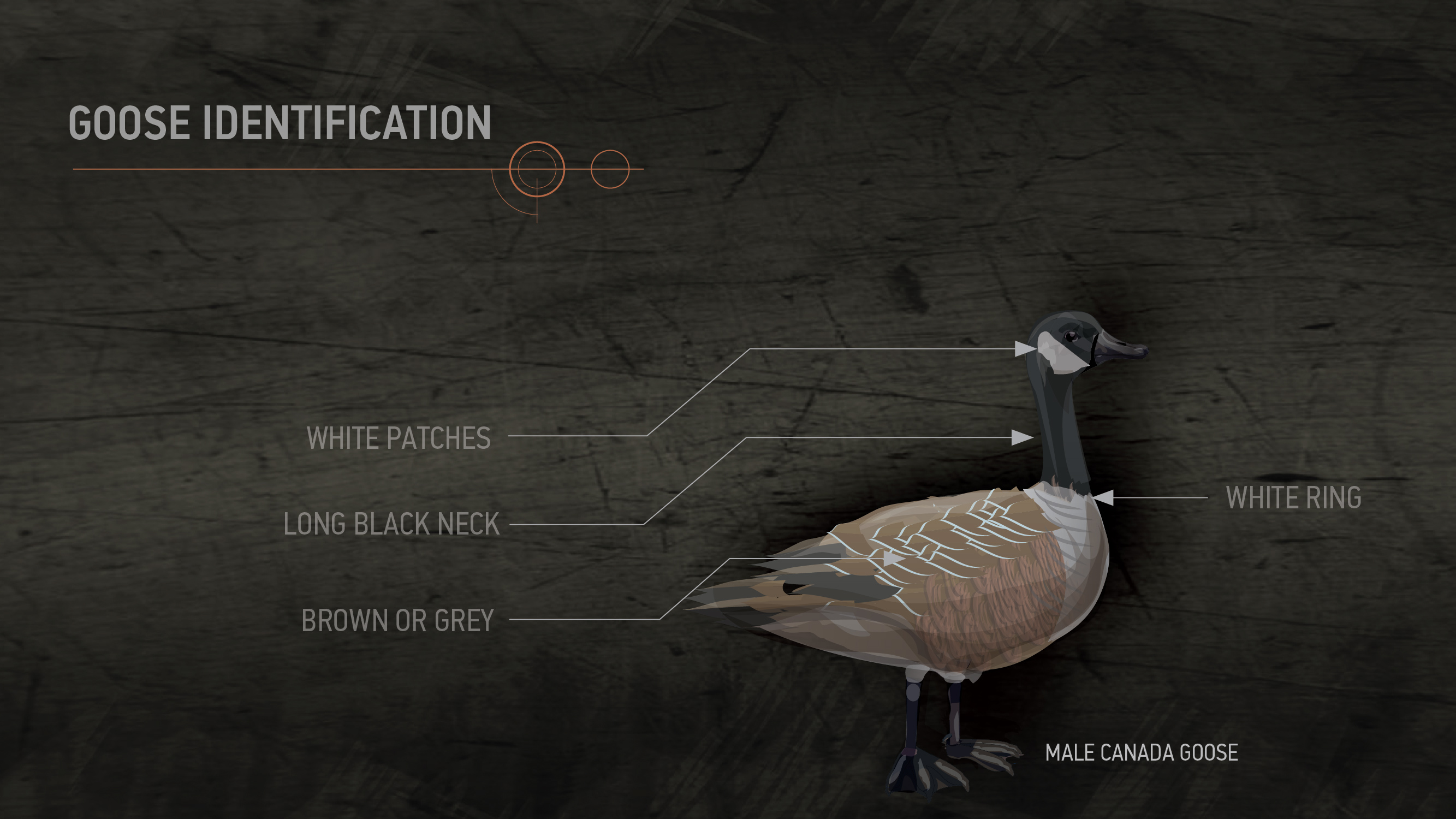HUNTINGsmart! USA Knowledge Base
Module 10 - WILDLIFE
GEESE


A goose on the loose makes for a great shooting target.
Identification
The Canada Goose is the most common goose species in North America. You’ve seen them around. They have long black necks and a small black head with white patches on their cheeks. Their bodies can be a greyish color or a brownish color and they have a white collar around their neck. When flying in a group, their trademark move is to fly in a ‘V’ shape and honk, and honk, and honk...
Diet
These birds are ‘dabblers’ who feed on grasses, flowers, leaves, berries, seeds, roots, etc. They’re constantly eating to prep for their long migration flights and for the potential food scarcity when they arrive at their destination.
Habitat & Migration Habits
Geese spend most of their time hanging out in wetland areas. Although geese are waterfowl, they don’t float around the way ducks do. They’re actually much more likely to be found walking around on the shore dabbling at the vegetation.
Geese make bowl-shaped nests in a variety of places, such as swampy shorelines or at the bases of trees. Their home range is enormous. Major migratory birds, geese can be found cruising from up north in Canada to all the way to Mexico, depending on the time of year.
Goose Calls
Geese are very vocal birds and they make a variety of vocalizations including ‘hail calls’, ‘clicks’, ‘comeback calls’, ‘whines’ and ‘moans’, but beginners don’t need to know all of these to master the art of calling in a goose.
There are only two calls that you need to know to get started calling geese:
The ‘Long Range Hail Call’: This call is the classic ‘honk’. Make the right sound and you can attract geese from a fair distance away. It’s a two-part sound that starts with a low growl and ends with a high, sharp sound. When they start flying toward you, speed it up and quiet it down.
The ‘Cluck’: You make the ‘cluck’ sound once you have their full and complete attention. It’s a repetitive, sharp, high-pitched honking sound. It should sound like “onk” when it comes out of the call device. Cluck steadily and get quieter as the geese fly closer to you.
Firearms, Ammo & Your Target
Like with other birds, you should use a shotgun when on a goose hunt. Geese are bigger birds though so you’ll need a tougher firearm/ammo combo than you would for shooting a dove. You’ll need a 10 or 12-gauge shotgun and most hunters will use a modified or improved choke. For your ammo, go with a larger shot size and a 3½-inch shell length with a heavy charge. Most waterfowl hunters use No. 4, 3, 2, 1, BB. BBB and T, with the larger shot sizes being used for geese.
Vital Zones
Aim for the head, heart and lungs. Land an accurate shot and you should hit all three with one trigger pull.



